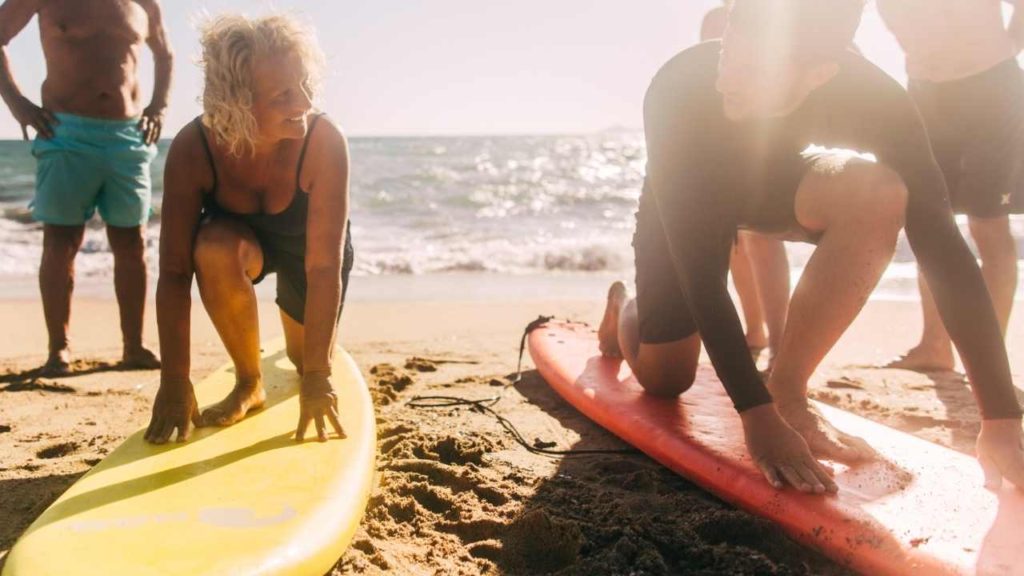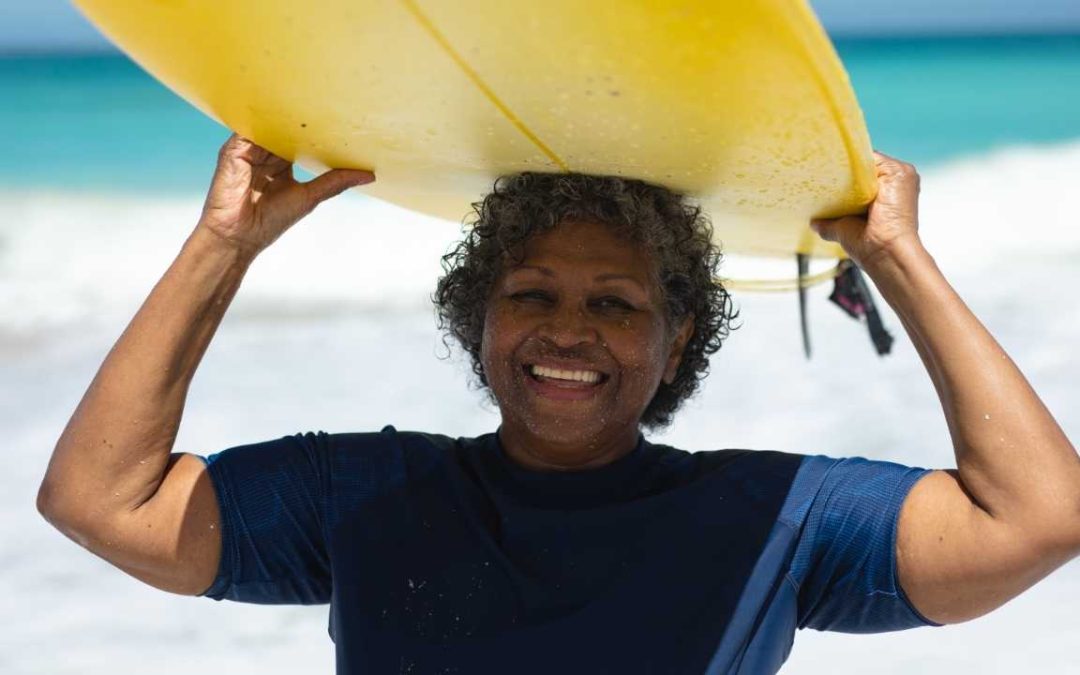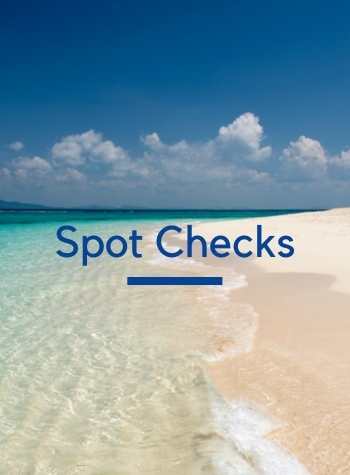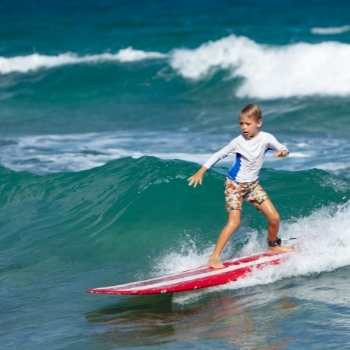There used to be a time when you would hit your 30ʻs and youʻd be considered too old to try and learn a new sport. That time is over!
People of all ages are picking up new hobbies, the young and the old alike. And women in their 50ʻs are no exception.
But is 50 to old for a woman to learn how to surf?
50 year old women can definitely learn how to surf, there have been 70 year old women who have learned. What it takes is being in good physical shape and a mental “can do” attitude.
Surfing is a very physical sport, so it all starts with your level of physical fitness. Is your body in good enough shape to handle what it will go through out in the ocean? Then you can probably go surfing. Read this post, you can start surfing at almost any age.
Below are a few things you should consider before you first paddle out.
Get Your Body Ready For Surfing

No matter your age, it is important to get your body ready for the physical demands of surfing. Learning how to surf requires a fair amount of upper body strength as well as balance, coordination, and stamina.
Start by incorporating some basic exercises into your routine that will help build strength and improve your balance.
A great program that I have been going through the past few months has been Surf Strength Coach. This program has moved this dad bod back into surfing shape, I still got work to do but it feels so good catching fun waves again and surfing them well.
Yoga is another great way to increase flexibility and learn how to control your breath, both of which are helpful when surfing.
Swimming is also a good activity to pursue because it helps build upper body strength and endurance. As an added bonus, if you do happen to fall off your surfboard while surfing, you will be more comfortable and confident in the water.
Another great sport that can help you prepare for surfing is stand up paddle boarding. This activity also requires both balance and coordination, and will give you a good idea of what it feels like to stand on a board in the water. You can get yourself pretty decent inflatable SUP surfboards from Amazon these days.
In addition to physical preparation, it is also important to mentally prepare yourself for surfing.
Bodysurfing in the waves might help or go out on a boogie board a few times before the big day. This will not only physically prepare you for surfing, but will mentally prepare you as well.
Should You Take A Lesson?

Many people opt to take a beginner surfing lesson in order to get a feel for the basics before heading out on their own.
It is a great idea to take a lesson if you can, as this will help you learn the proper techniques for paddling, standing up on your board, and riding waves.
I would recommend finding a local surf school in your area that offers group or private lessons at a beach that is suited for beginners.
This is a great way to get started because you will be surrounded by other beginner surfers, and you will have the support and guidance of an experienced instructor.
A good instructor will be able to assess your skill level and help you select the right type of surfboard for your body, size, and skill level.
They will also be able to give you advice on how to improve your technique and help you avoid any common mistakes that beginner surfers make.
Surfing lessons can be a great way to build confidence and learn the basics in a controlled environment.
However, if you are feeling confident about your ability to learn on your own, you can definitely give it a try without taking a lesson first. Just be sure to take things slowly and read this post first which will help you teach yourself to surf.
Also, always make sure to take someone else with you when you go out surfing, just in case you need help.
What Type Of Board Should I Use?
A wide variety of surfboards are available, and the one you choose will depend on your skill level, body type, and surfing goals.
For beginners, a soft-top board is generally recommended since it is lighter and thus easier to handle than traditional hard boards.
My favorite soft-top board for beginners is the classic Wavestorm soft top surfboard. It is very stable which makes it easy to learn on.
Once you learn to pop-up, you may want to consider using a hard board, which offers better speed and maneuverability than a soft-top board. It will take your surfing up to a whole new level in a matter of days.
Whatever type of board you choose, make sure that it feels comfortable and stable in the water. This will help ensure your safety as well as your enjoyment when learning how to surf.
Where Should I Surf?

If you are a beginner, then it is best to start out at a beach that is known for being welcoming to beginners and not overly crowded or dangerous.
These tend to be sandy bottom beach breaks. Youʻll just be catching waves in the whitewater the first few times anyway.
Pick a smaller day away from the crowd and catch waves on the inside where you can still stand. This will give you the wave count that you need to work on your pop-up.
Once you have mastered the basics and feel confident in your skills, then you can try some of the more challenging beaches with bigger waves.
These types of beginner beach breaks are everywhere. Theyʻre not going to be at a famous beach like Malibu, or Noosa, or Waikiki, theyʻll be at one of those big, wide open sandy beaches youʻve never heard of that have the best surf for you.
The World Awaits
So, needless to say, the rewards of mastering surfing later in life can be great.
Not only do you get to enjoy the physical and mental benefits of this exciting sport, but you also get to experience all that the world has to offer in terms of beautiful beaches and amazing surf breaks.
So what are you waiting for? Get out there and start learning how to surf today!



